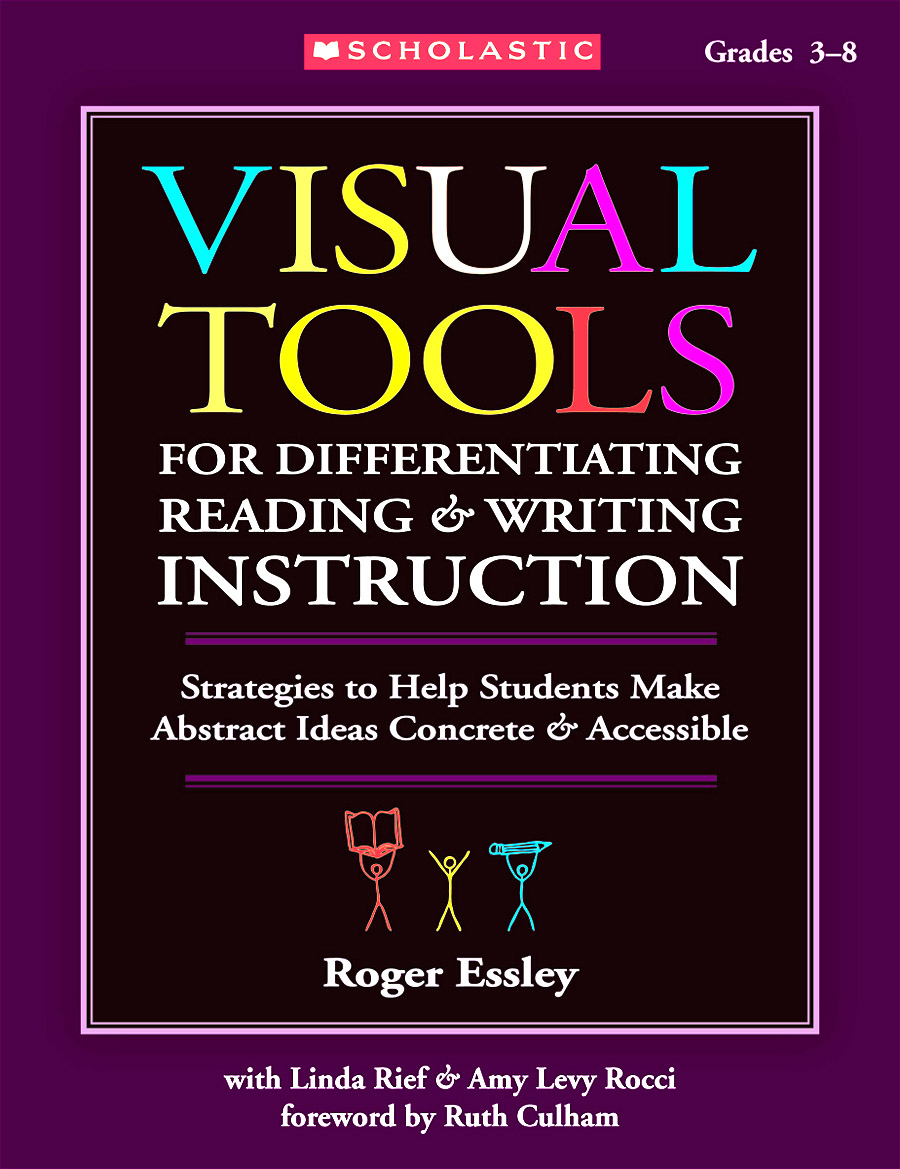Visual Tools for Reading and Writing

Here’s a look inside Visual Tools, my first Scholastic book, available from Scholastic, Amazon, and bookstores. (You’ll find links to the Foreword and opening chapter below.)
You’ll find practical tools that dramatically increase reading comprehension, making writing and revision easier. See how visual tools support all learners in Amy Rocci’s third grade classroom and how the same tools make Linda Rief’s eighth grade writers workshop more engaging and inclusive.
Teachers share proven strategies using a coherent set of visual tools that can easily be integrated in the curriculum. See how visual tools can be adapt to many literacy tasks, for note taking, reading, writing and more.
Simple how-to will help you get started offering your learners visual tools. Let your students show you how to pull all learners into the literacy circle.
Below are links to the Forward by Ruth Culham and the Introduction, an overview of the way Visual Tools offer unique and flexible support for “different learners” while they make learning easier for all students.
Visual Tools for Reading and Writing Contents

Foreword by Ruth Culham – Author, 6+1 Traits of Writing
Introduction Why Use Storyboards?
–Take a look at this overview of Visual Tools in the classroom
Chapter 1 Storyboarding as a Bridge to Text
— Why integrating pictures and text make learning easier…
Chapter 2 Reluctant Writers Engage: Shared Writing
— Alternative writing tools that engage all learners
Chapter 3 Storyboards: More Than Stories by Linda Rief
— Using visual tools in the eighth grade Writing Workshop
Chapter 4 Visual Tools for Differentiated Instruction
— Exploring the way visual tools make differentiation easier
Chapter 5 Developing a Storyboarding Classroom by Amy Levy Rocci
— Integrating Visual Tools in the Third grade curriculum
Chapter 6 Reading Comprehension: Core Visual Skills
— Using simple images to anchor reading and discussion
Chapter 7 Introducing Storyboards and Drawing in the Classroom
— The how to basics of introducing storyboards in the classroom
Chapter 8 Shared Writing: Revision and Conferences Made Simple
— Connect writer and audience with Visual and Verbal support
Chapter 9 “Different” Learners in the Visual Classroom
— How alternative tools to pull all learners into the literacy circle.
Appendix include: Visual Story-Building Workshop + Examples of Storyboard Formats
